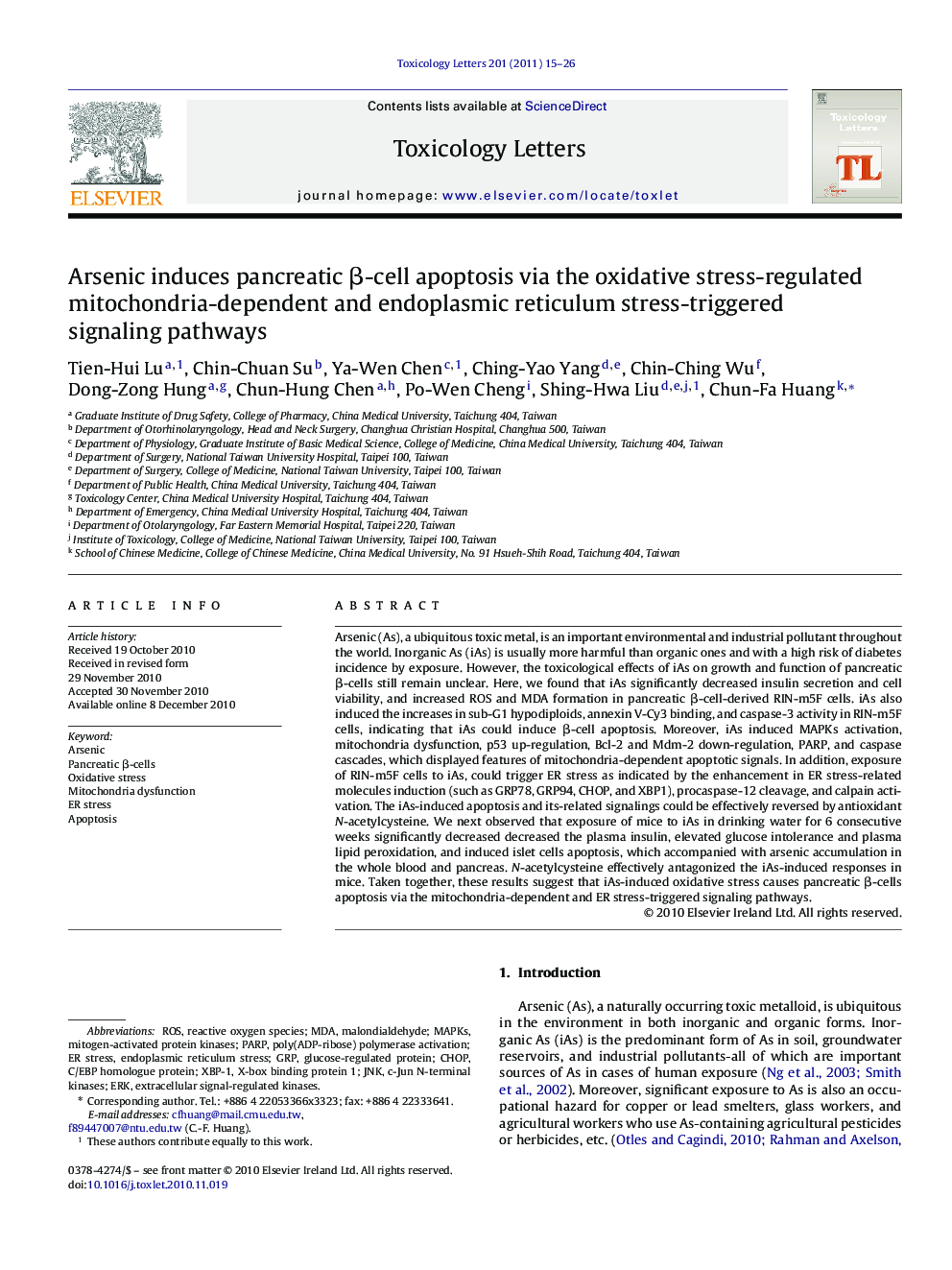| کد مقاله | کد نشریه | سال انتشار | مقاله انگلیسی | نسخه تمام متن |
|---|---|---|---|---|
| 2600444 | 1133265 | 2011 | 12 صفحه PDF | دانلود رایگان |

Arsenic (As), a ubiquitous toxic metal, is an important environmental and industrial pollutant throughout the world. Inorganic As (iAs) is usually more harmful than organic ones and with a high risk of diabetes incidence by exposure. However, the toxicological effects of iAs on growth and function of pancreatic β-cells still remain unclear. Here, we found that iAs significantly decreased insulin secretion and cell viability, and increased ROS and MDA formation in pancreatic β-cell-derived RIN-m5F cells. iAs also induced the increases in sub-G1 hypodiploids, annexin V-Cy3 binding, and caspase-3 activity in RIN-m5F cells, indicating that iAs could induce β-cell apoptosis. Moreover, iAs induced MAPKs activation, mitochondria dysfunction, p53 up-regulation, Bcl-2 and Mdm-2 down-regulation, PARP, and caspase cascades, which displayed features of mitochondria-dependent apoptotic signals. In addition, exposure of RIN-m5F cells to iAs, could trigger ER stress as indicated by the enhancement in ER stress-related molecules induction (such as GRP78, GRP94, CHOP, and XBP1), procaspase-12 cleavage, and calpain activation. The iAs-induced apoptosis and its-related signalings could be effectively reversed by antioxidant N-acetylcysteine. We next observed that exposure of mice to iAs in drinking water for 6 consecutive weeks significantly decreased decreased the plasma insulin, elevated glucose intolerance and plasma lipid peroxidation, and induced islet cells apoptosis, which accompanied with arsenic accumulation in the whole blood and pancreas. N-acetylcysteine effectively antagonized the iAs-induced responses in mice. Taken together, these results suggest that iAs-induced oxidative stress causes pancreatic β-cells apoptosis via the mitochondria-dependent and ER stress-triggered signaling pathways.
Figure optionsDownload as PowerPoint slide
Journal: Toxicology Letters - Volume 201, Issue 1, 25 February 2011, Pages 15–26